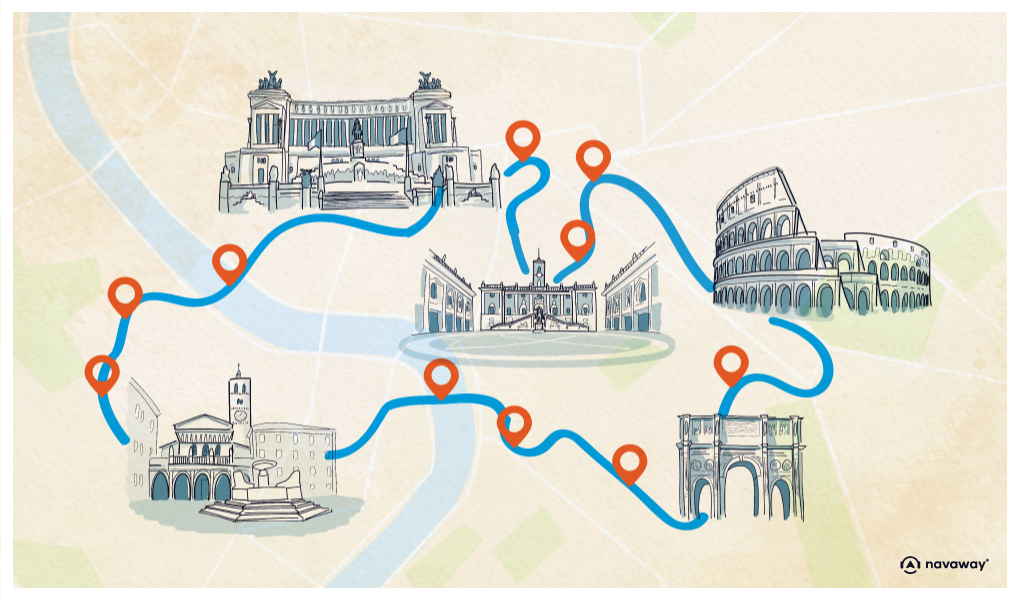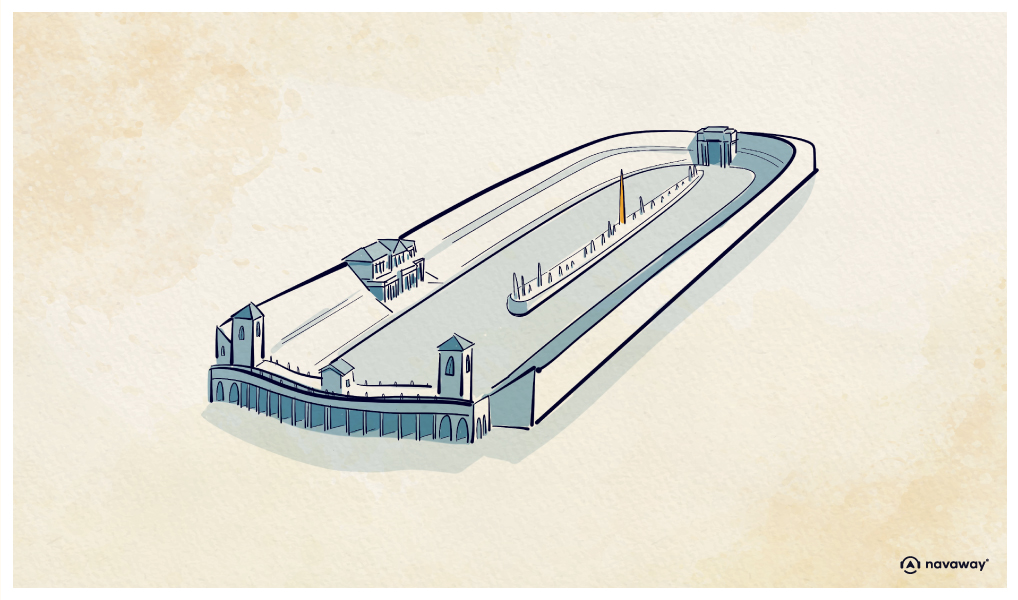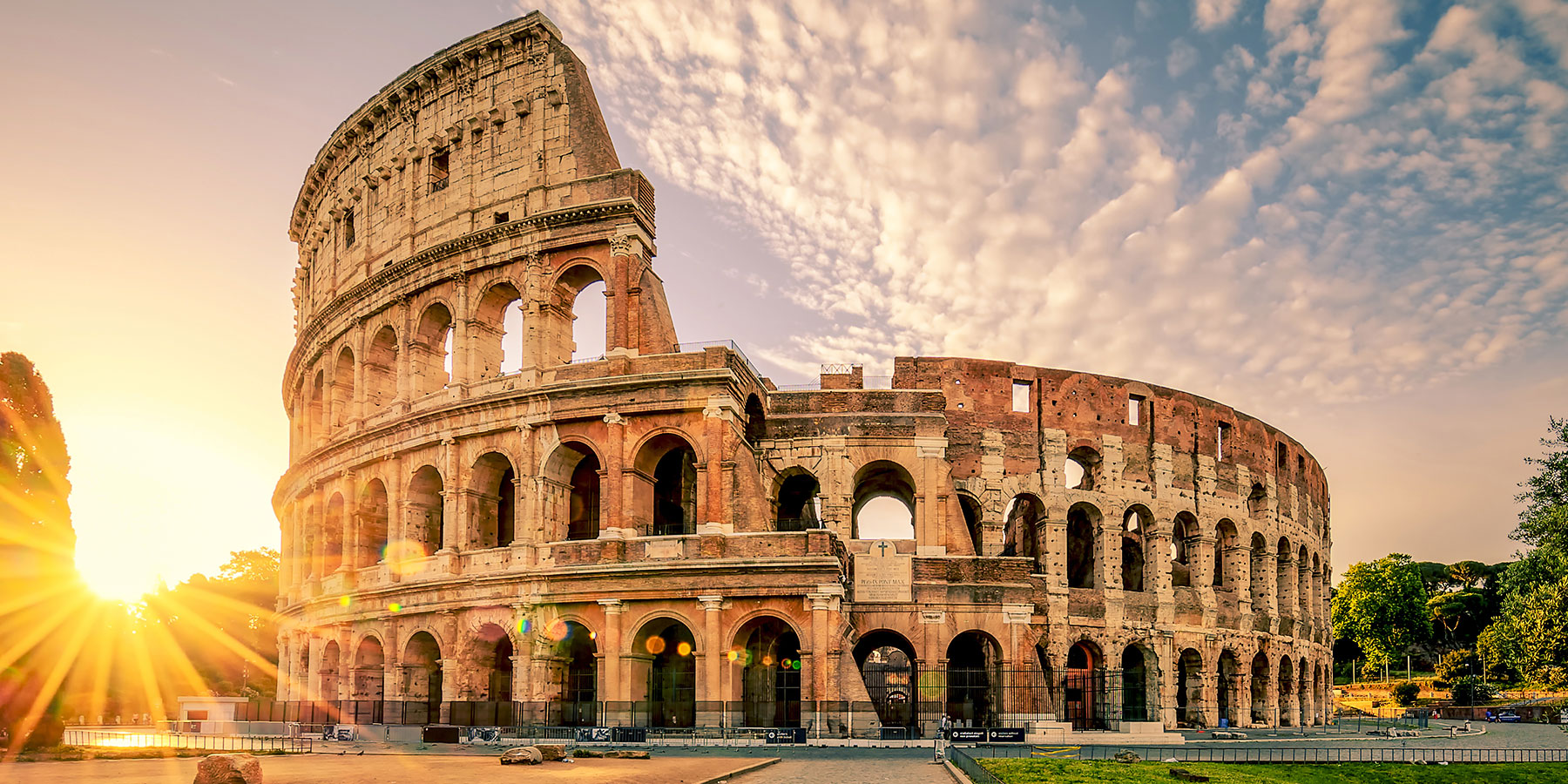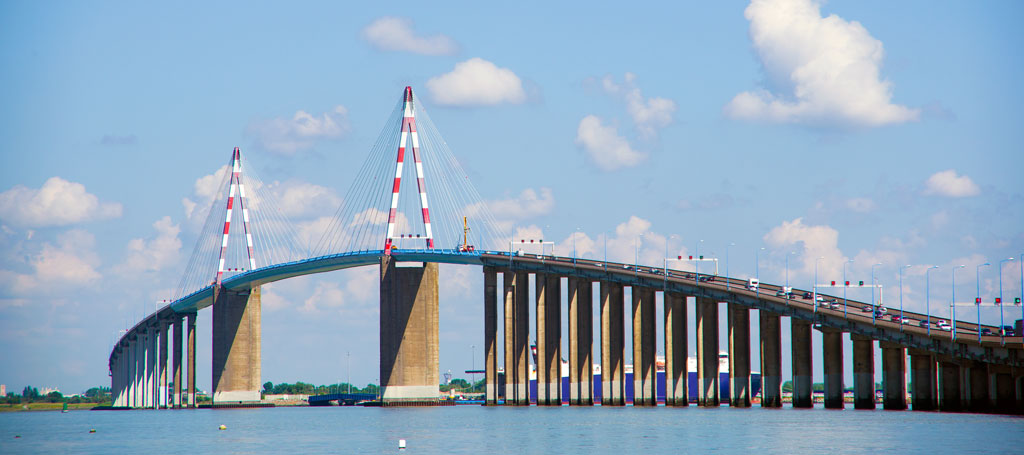
Circus Maximus

This point of interest is available as audio on the tour: Visit Rome, The Eternal City
If you haven’t cut across the Palatine Hill, you’re in for a treat: here’s your chance to explore the Circus Maximus.The truth is, you’ll have to use your imagination, as there’s not much left of the structure. Regardless, it remains an important part of the city’s history. Imagine here, on this stretch of grass, a gigantic arena – the biggest one in Rome! It was 600 meters long and almost 200 meters wide, seating 200,000 frenzied spectators who’d come to watch the chariot races. Its name, Circus Maximus, has nothing to do with any Emperor named Maximus – it comes from the Latin “maximus,” meaning “the greatest.” It’s the largest structure in ancient Rome and the biggest sports arena ever constructed! Take a look around as I give you a brief overview of its past. Legend has it that the stadium was built in 600 BC, under the reign of Tarquin the Elder, one of Rome’s 7 great monarchs. The site is said to have been used for the first ever Roman public games, which included horse-racing. In the 4th century BC, they began to build permanent wooden structures and bleachers, but it wasn’t until the reigns of Caesar and Augustus that the site became a full-fledged Roman circus. Sadly, the Circus Maximus was abandoned over time, and its stones were used for the construction of other buildings. However, you can still see the obelisks that the chariots used to drive around. The first one dates from the reign of Ramses II and you’ll see it in the Piazza del Popolo. The second one is in front of the Basilica of St John Lateran. To get a better sense of what the site looked like and how chariot-racing worked, you’ll need to imagine a dividing barrier, the so-called “spina,” running down the middle of the arena. It was a raised platform or a ditch, stretching two-thirds of the length of the Roman circus and decorated with statues and obelisks. On either side of the spina there were columns supporting giant stone eggs and dolphin statues. The chariots raced around the spina seven times, and with each lap, an egg and a dolphin were removed so that spectators could easily count the remaining laps. Prior to the construction of other amphitheaters, and later the Colosseum, the Circus Maximus also hosted gladiator fights, Venationes, that is, animal hunts, and even executions of early Christian martyrs. For a long time, the Circus Maximus was the only one in the Empire with a moat to protect the audience from wild animals. Today, the site still hosts major events like the Rolling Stones concert in 2014 and the celebrations for Italy’s 2006 World Cup victory.

Discover other tours to visit Rome

Discover Rome with app
An interactive guide through the most beautiful streets, squares, and districts
23 fun audioguides full of historical facts, anecdotes, and legends






Comments